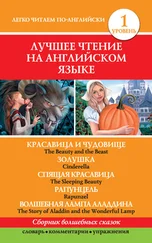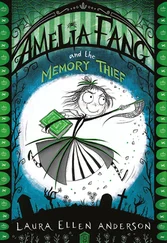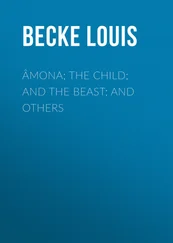Not all English vowel sounds have exact Russian equivalents. The standard Russian transliteration of “Taffy” is “Тэффи” (Teffi).
It is unclear whether Teffi had one or two elder brothers. There is documentary evidence only for one elder brother, Nikolai Lokhvitsky (1867–1933), who attended military school and by the end of the First Word War had attained the rank of lieutenant general. Here, however, we have an elder brother attending a lycée rather than a military school and there are two other stories (“Love” and “The Scarecrow”) in which Nikolai is presented as the second of two brothers (Haber, chapter 1). The biographical truth is, at present, impossible to establish with certainty. On the one hand, Teffi presents her stories simply as stories, not as biographical memoirs; on the other hand, it is odd that she so often mentions having two brothers.
Typically a peasant woman employed first as a wet-nurse to a baby and then kept on as a household servant. Often she was more deeply involved with a child’s life than its mother.
The illustrated journal Sever ( The North ), founded in 1887.
Nadezhda Lokhvitskaya studied in the Liteiny Girls’ School in Mokhovaya Street, St Petersburg. The school celebrated its twentieth jubilee in 1884. The Tsaritsa would have been Maria Fyodorovna, wife of Alexander III.
Journals of the time often had a “post bag”, a section where authors of manuscripts submitted for approval were publicly offered advice and criticism.
When Teffi was a child, her family—like many upper-class Russian families—spent each autumn and winter in St Petersburg and each spring and summer in their country estate. In their case, this was Teffi’s mother’s estate, in Volhynia, in what is now Western Ukraine—a remote and exotic area at this time even for Russians. The children saw little of the families of other landowners, most of whom were Poles, and had more contact with ordinary villagers. Teffi appears to have been the fifth child in the family and to have felt closest to Lena, her youngest sister.
For Orthodox Christians, the day before Easter Sunday—the day Christ descended into Hell—is a day of fasting and mourning. The last service of the day, the Easter Vigil, reaches its climax at midnight, with the celebration of Christ’s resurrection.
He is probably limping in imitation of Lord Byron. For more on Teffi’s brother(s), see “My First Visit to an Editorial Office”, note 1.
A baba is a peasant woman; neckweed is another name for hemp.
In her autobiographical sketch “Kishmish”, Teffi explains that a kishmish is a kind of small raisin from the Caucasus and that she was given this nickname because, until she suddenly grew quite tall towards the age of thirteen, she was exceptionally short. Her shortness—and this nickname—greatly upset her.
Martha, or Richmond Fair (1847) by the German composer Friedrich von Flotow (1812–83).
The heroine of many Russian folk tales, here confused with Helen of Troy.
See “Love”, note 3.
Twenty years later, in 1947, Teffi ended her article about Baba Yaga, the archetypal old witch of Russian folk tales, with an almost identical single word paragraph: “B-o-r-i-n-g” (“ Sku-u-uchno ”). She was clearly alluding to this story, which ends with the same word. As an adolescent Teffi wanted to be a Cleopatra; in 1947, in her mid-seventies, she sees herself as Baba Yaga. See Robert Chandler, Russian Magic Tales from Pushkin to Platonov (London: Penguin Classics 2012). In this translation we have drawn the word out, in order to lend it the appropriate emotional weight; Teffi draws the word out in her 1947 article, but not in “The Green Devil” itself.
Teffi was young when she had her first child, but not as young as this implies. She married in January 1892 and, aged twenty, gave birth to her daughter Valeria in November that year. Her marriage was deeply unhappy and Teffi eventually abandoned her husband and children, returning to St Petersburg and soon beginning to earn her living as a professional writer.
A department store in Moscow run from 1880 to 1918 by two Scottish businessmen, on the site of what is now the Central Department Store (TsUM) on Theatre Square. “Dresden ornaments” were, for the main part, produced between 1890 and 1910. They were made from cardboard, dampened to make it flexible, and then gilded, silvered or painted.
In this story Liza represents Teffi herself, while Katya is Teffi’s younger sister Lena.
Kulich is a sort of spiced Easter bread and paskha is a curd cheesecake.
Baba is not only a colloquial Russian word for a woman but also a type of cake.
A reference to the biblical story of Nebuchadnezzar, King of Babylon: when Shadrach, Meshach and Abednego refused to worship him, he had them thrown into a fiery furnace.
Masha represents Teffi’s elder sister Mirra Lokhvitskaya, later a well-known poet.
A reference to Peter’s denial of Christ. During the Last Supper Jesus predicted that, before the cock crowed the following morning, Peter would deny all knowledge of him. Liza is attending the Holy Thursday service “The Twelve Gospels of the Passion of Our Lord and Saviour Jesus Christ”—a reading of twelve passages from the Gospels relating the betrayal, arrest, trial and crucifixion of Jesus. The service also includes a procession that re-enacts Christ carrying his cross to Golgotha.
A famous romance composed by Yelizaveta Kochubey (1821–97).
This last section of the story evidently takes place during the Russian Civil War. After being evacuated from Odessa in April 1919, Teffi was on board a small ship bound for Novorossiisk, the Black Sea port from which she soon afterwards set off for Constantinople. For a more extensive treatment of this episode see Teffi, Memories, chapters 17–23, esp. 23.
This story is set in the 1920s, when Teffi was living in Paris.
A Russian literary journal published in Paris from 1920 to 1940.
Soon after the October Revolution there was an official reform of the Russian alphabet, the aim being to simplify the spelling. Many émigré publications, however, continued to use the old orthography for several more decades.
A pacifist Christian sect, the Dukhobors rejected both the tsarist regime and the Orthodox Church. Many emigrated to Canada in the early twentieth century.
Here Teffi touches on controversies within Russian Orthodoxy. Earlier in the story one of the speakers casually equated Lenin with Judas. Praying for Judas is considered a sin, in part because he was a suicide, but more importantly because of his role in condemning God to death. Lenin, like Judas, may be considered a traitor, but that is not relevant to the question of whether or not one should pray for him. Most White Russians, naturally, would have found it hard to bring themselves to pray for Lenin. Natasha’s desire—or rather need—to pray for him is an indication of her extraordinary open-heartedness; it may also be Teffi’s delicate way of hinting to the émigré community that it is better not to identify matters of faith with matters of political ideology.
Читать дальше












